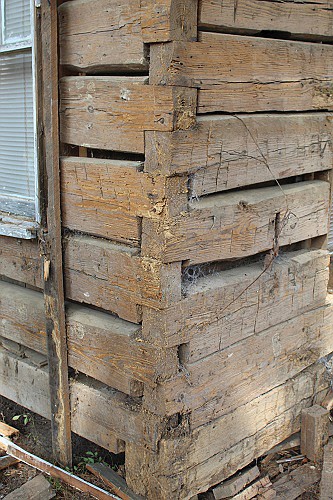PRESCOTT, Ark. - The Nevada County Depot and Museum may have found a Civil War-related historical golden nugget late last year, but its only obstacle to preserving it involves an unresolved property ownership legal matter.
While in the process of demolishing a residential home on Greenlawn Street in Prescott, back in October, demolition work crews uncovered a log cabin within the existing house, according to information supplied by Nevada County Depot and Museum Director Judy T. Duke. Initially the museum had plans to dis-assemble the cabin and put it in storage, however, because of questions regarding ownership the museum isn't able to take custody of the structure.
Presently, the property the cabin is now located on, is an estate that hasn't yet been probated, Duke said in an interview last month.
The vintage log cabin, which measures 18 feet long and 20 feet wide, had apparently "been added onto and its exterior encapsulated with siding," Duke wrote in E-Mail correspondence. The cabin had also apparently been moved from its original location, to the Greenlawn Street location sometime around 1953 to 1955.
Duke wrote that in the course of conducting historical research on the cabin, local historians and museum officials discovered that the cabin had initially been built on Miller Hill in the Prescott area. Also, in the course of searching land patients, locals also discovered that the cabin had originally been built on land owned by local resident John Vaughn - this would date the cabin back to the 1850-1860 time frame.
Duke noted in her correspondence, that the cabin had been made of hand-hewn timbers - which pre-dates the 1870's expansive use of the growing railroad freight system back then - a system which by then, transported lumber.
"There is great possibility that the cabin is likely a Civil War-time structure - if not antebellum," she wrote.
However, in terms of its ultimate destination and preservation - 0nly time and legal wrangling will tell.


